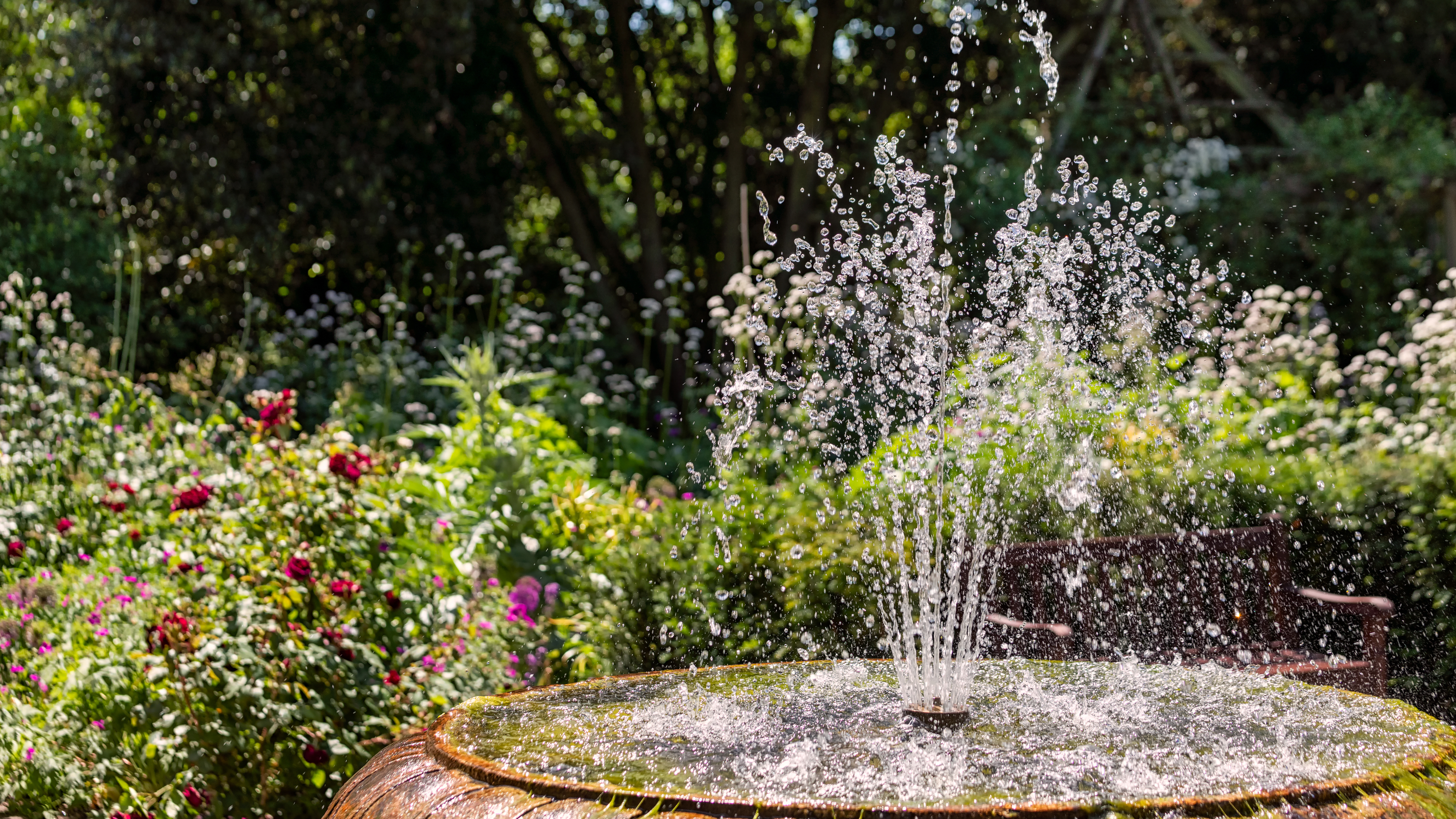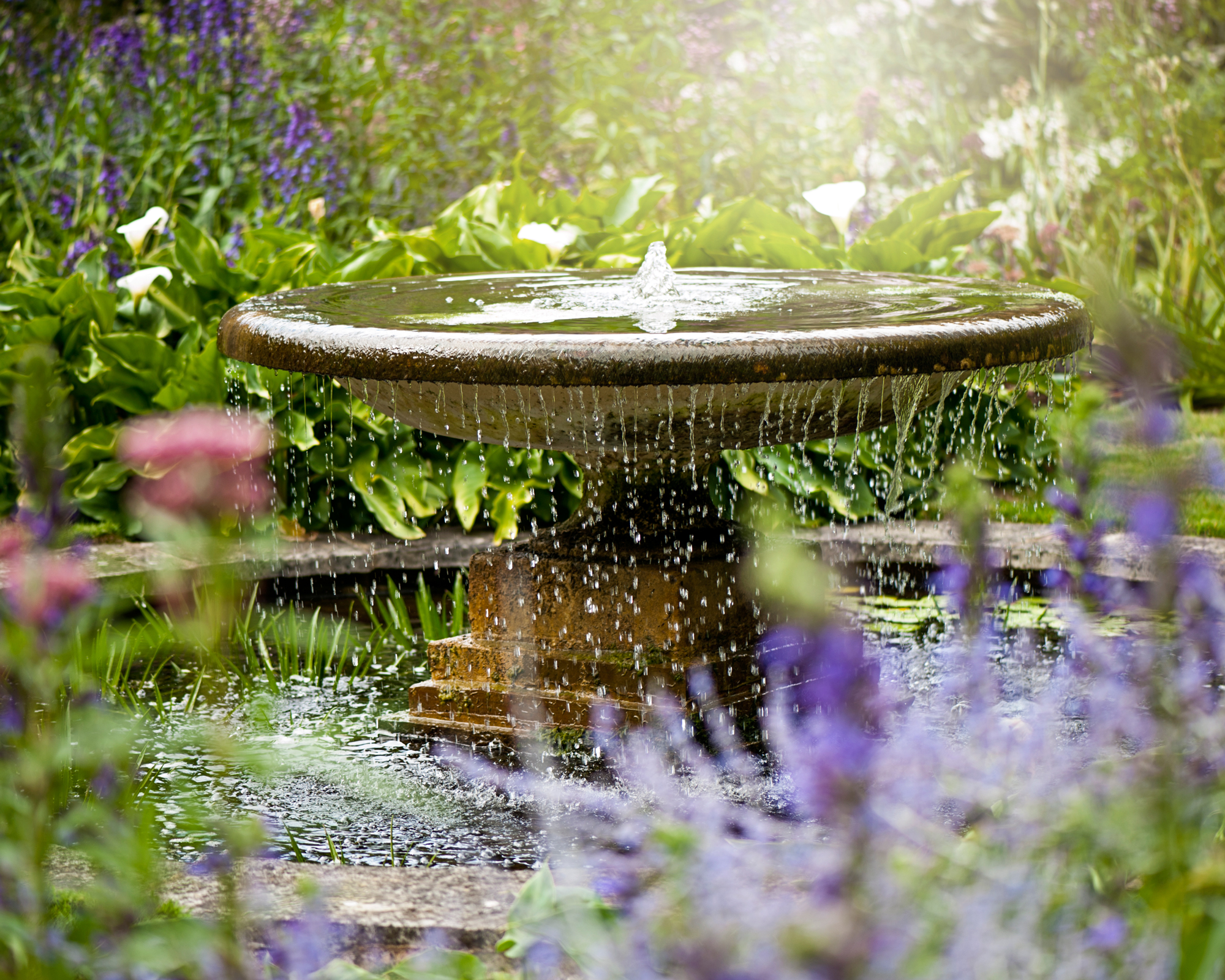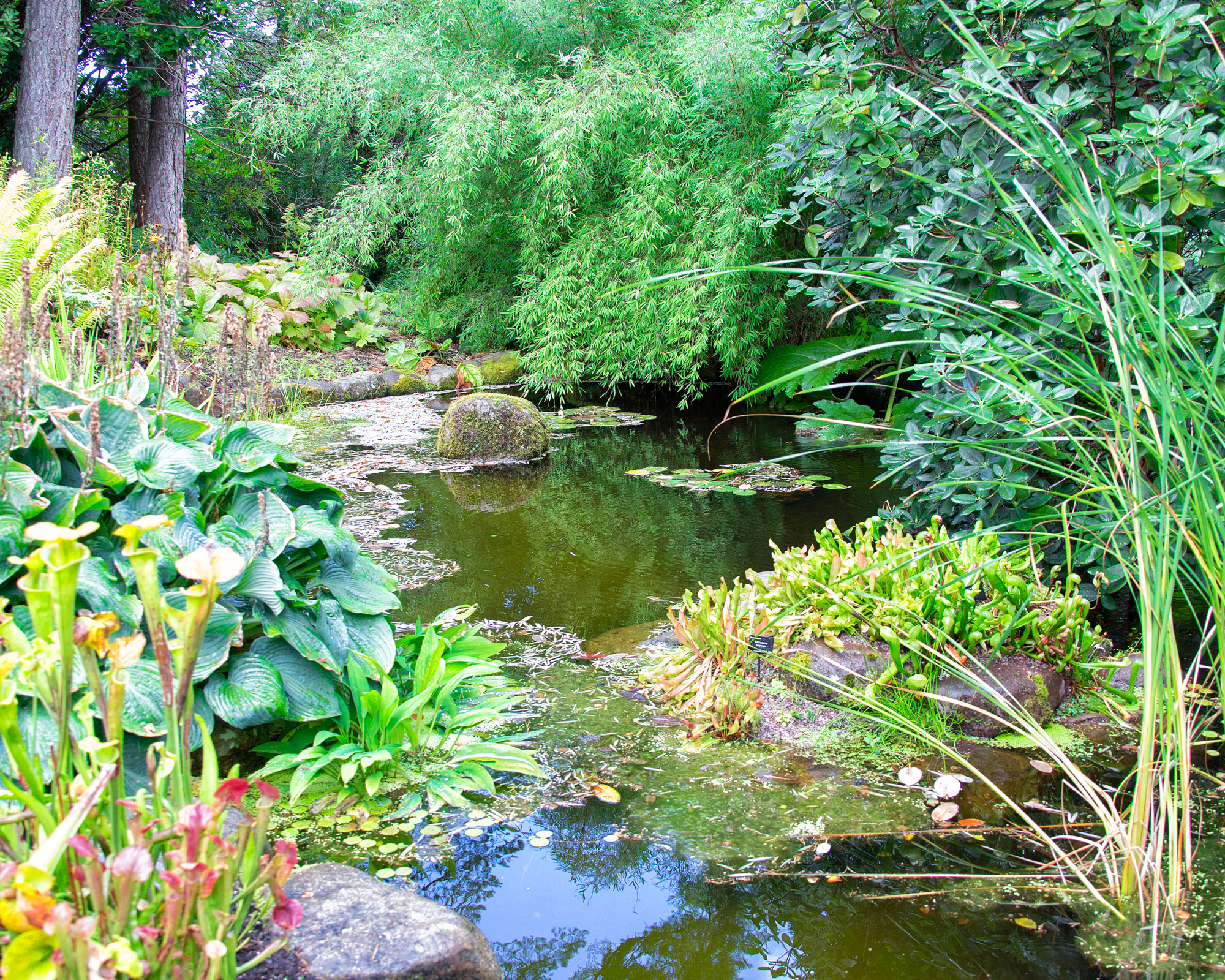Can I put bleach in my garden water feature? Here's what the experts say
Is putting bleach in your garden water feature to clean it ever a good idea? Garden maintenance experts give their verdict

'Can I put bleach in my garden water feature?' is a question many a gardener has asked when their beautiful garden fountain suddenly looks grimy, the water cloudy and covered in algae. Bleach seems like an appropriate solution – many people use it to get rid of algae on patio pavers, so why not dilute a little in your water feature?
Browsing water feature ideas and installing the feature are only the first steps to enjoying your garden fountain – you'll need to do regular maintenance to keep them look good. We've asked gardeners and gardening maintenance specialists whether adding bleach to a fountain or pool is ever a good idea – and what you might consider using instead.

Can I put bleach in my garden water feature?
Our experts are unanimous on this one: no, you absolutely should not be putting bleach in a water feature in order to clean it. Michael Dean, Co-Founder at Pool Research, a site that provides expert advice on all things related to pools and general landscaping, is strongly against the idea.
'I've got a lot of experience cleaning water features as well as pools,' he says, and here's what he tells his clients: 'It is not a good idea to use bleach to clean your water feature or fountain. Bleach can corrode the concrete in a water fountain, and may also stain it, so it isn't a good "quick fix" despite what you may read online. Also, if there are any pets or animals around, using bleach will make the water unsafe for their consumption and could potentially cause them serious harm.'
Jeremy Yamaguchi, the CEO of Lawn Love, seconds this opinion: 'You should never use bleach on a water feature. For a fountain, it can damage the pump. For a pond or anywhere that wildlife can reach, you could potentially harm or even kill fish, birds, amphibians, etc. It's not worth it.'
And if you need further convincing, Stephen Webb, editor and founder of Garden’s Whisper, a website specializing in gardening, also points out that 'the first ingredient in bleach is chlorine, which will react with the water over time and make the problem worse. Using something like chlorine with any kind of quantity can also cause irritation or burns to skin, as it's extremely strong and not meant for open hand/skin contact.'
Even the best pond plants will die if they come into contact with bleach. So, bad for your water feature, bad for wildlife, and bad for your skin? We'll give bleach a pass in this instance.

What should I use instead of bleach to clean my water feature?
You have several options here, all of them easy to use and safe. According to Michael, 'The best way to clean algae from your water feature or fountain is to use a fountain clarifier, also known as an algaecide. Fountec (available from Amazon) is one I usually recommend, as it is a safe and effective product that eliminates algae without staining or polluting the water. It can also be used regularly to prevent future algae growth.'
Jeremey prefers cleaning tablets (try Amazon) in powder form: 'I like this better because it distributes more evenly without more work on your end.' He also emphasizes the importance of regular physical scrubbing: 'you also need to keep your water fixture clean. Turn off the pump and scrub down the sides. Get any algae or dirt off.'
And if you want a more hands-off solution, Stephen recommends running your fountain 'through a filtration system designed specifically for the purpose. An example of this would be UV sterilizers, which emit ultraviolet light that destroys all types of algae or bacteria in the water. These systems are extremely user-friendly and don't require much maintenance at all (just have to replace the UV bulbs every once in a while).'
These are all inexpensive options that are safe and effective – and can be used as part of your wildlife garden ideas.
Anna writes about interior design and gardening. Her work has appeared in Homes & Gardens, Livingetc, and many other publications. She is an experienced outdoor and indoor gardener and has a passion for growing roses and Japanese maples in her outside space.
